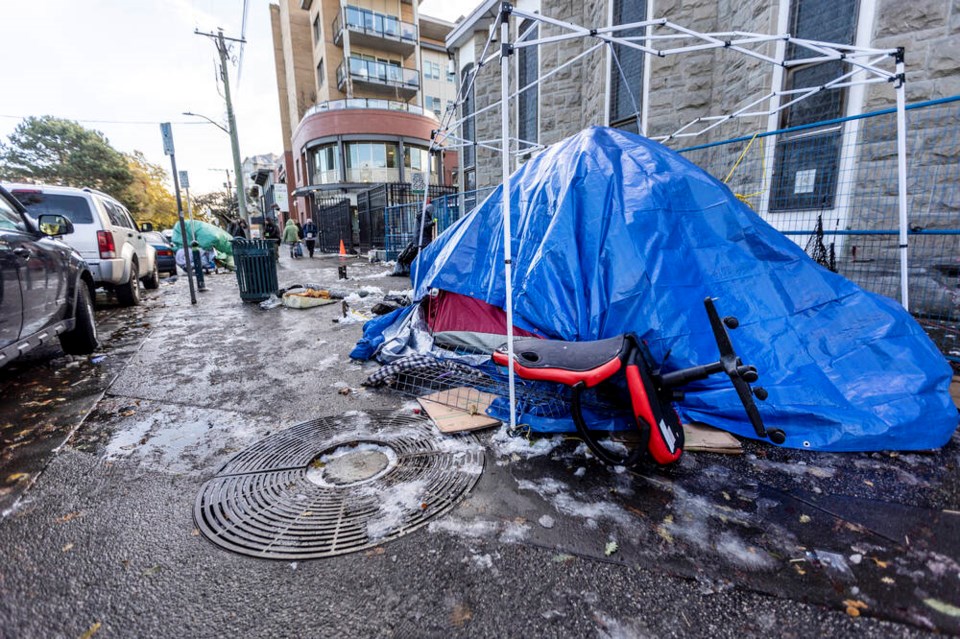A commentary by a resident of Victoria.
I had to go for two car appointments last week in Victoria, and leave my car in the shop for a few hours.
I have been in a few Canadian cities, walking the streets for whatever reasons, whether it is that I am visiting as a tourist, or that I am staying with friends and family.
In many cities, I am noticing the same thing that I did this past week in Victoria: The homelessness situation is confusing and when you get right into it on foot, it packs quite a reality-check punch.
When we are in our cars, we slip right past the problems without having the emotional impact of being in the middle of it, but I am noticing more and more that when I walk through a Canadian city or a town lately, I feel this experience of poverty, addiction, and mental health issues quite viscerally.
I am recognizing firsthand how much it is getting worse and how onlookers are getting frustrated.
The first day, the auto dealership warned me against walking along Government Street to the downtown core. “Take a cab.” When I insisted on walking, he said, “Well… Try Douglas Street, but it is bad.”
And it was. I came across a business owner picking up the glass from his broken front window. I stopped and told him that I was sorry for him.
He was so angry about the vandalism and blamed the provincial government for not doing more to incarcerate people for breaking the law.
“They buy the homeless people hotels, but fail to realize that these people cannot live by any rules. They need to be managed and if it means arresting them first, then so be it. I will need to close my business soon.”
The second day of yet another car repair, I took a cab. It was raining and I was not up for the onslaught of the walking dead all around me.
Downtown Victoria felt reminiscent of an earlier East Hastings Street in Vancouver, which has become a drug and mental health homeless disaster. Now, Victoria’s Pandora Avenue has literally been taken over by the same problem with people camping out in tents.
The cab driver told me that he no longer answers calls for pickups from various parts of Victoria. “They ruin my car and the smell is horrible.”
He went on to say, “We all need to get a thicker skin and call out people for breaking the law or I cannot work here any more.”
I had heard this before from my friend who was a Victoria paramedic until he opted out of the downtown core. He told my husband and I that he had not entered this career to rescue addicts repeatedly and see them using the Narcan paraphernalia to administer the drugs instead of saving themselves.
He finally hit his tolerance after years of trying to cope within it.
Downtown Canada used to be an urban dream of living by our work and making our way around by transit. My son and daughter-in-law bought a place in downtown Calgary to experience this sort of urban lifestyle.
Since they purchased a few years ago, walking our grandson around the area keeps us on our toes, navigating streets as safely as possible to avoid difficult encounters.
Even with our efforts to choose the route carefully by day (never by night now), the homeless situation shows up and it feels unsafe and unwell. My hometown of Calgary is no longer a feel-safe city where I could go out dancing as a single lady and get home by bus.
My downtown Canada that I have visited (Yellowknife, Saint John, Edmonton, Calgary, Vancouver, Toronto, Charlottetown, Saint John’s, Halifax, Winnipeg, Regina, and others) feels like it has reached a saturation point.
It is the holding tank of these cities’ problems so that suburbia can rest a bit more easily at night. What happens when we think of problems as matters of municipal territory is that we overlook the systemic issues of the whole city.
Laws are meant to be enforced. Mental health issues require interventions and ongoing management. These systems work together to help facilitate change and protect the population at large from danger.
Unfortunately, safety and wellness cost money and guess who has to pay for it? Me. I am OK with that answer only if it means rebuilding the whole scenario. We have to get tough and figure out solid solutions for everyone involved.
The first step, is to enforce basic laws: No loitering. No vagrancy. No open illegal drug use. No drunken and disorderly behaviour, etc.
From there, we have to start building systems of incarceration, while simultaneously creating places of healing and wellness (facilitated by trained professionals).
The two systems will need to work hand in uncomfortable hand as one streams to the next.
The second step is that we need to document the process so we can feel right about paying for it. Research transparency is essential.
Finally, we have to let healthy and informed leaders do their jobs and stop enabling and entitling those who are incapacitated to continue to be so publicly and at the expense and danger of society at large.
Sometime, we have to make tough decisions to clean up a situation that has gone dreadfully wrong.
I care about these disenfranchised people, whether the problems are created around or by their own doing, but I care about my grandson’s well-being most.
I want him to grow up in a safe place where he is exposed daily to healthy individuals. Period.
This only happens if we get tough and truly understand that his social reality is what we make and accept it to be.



